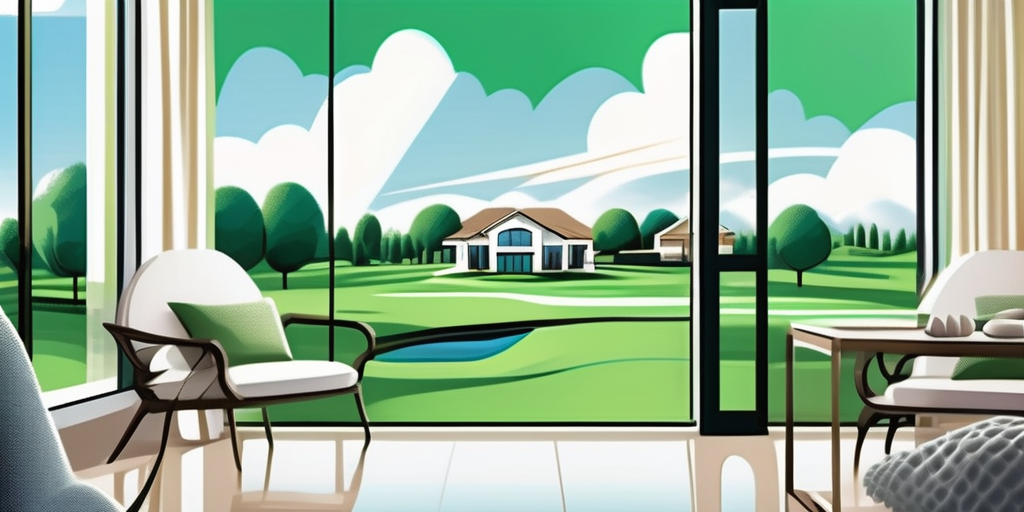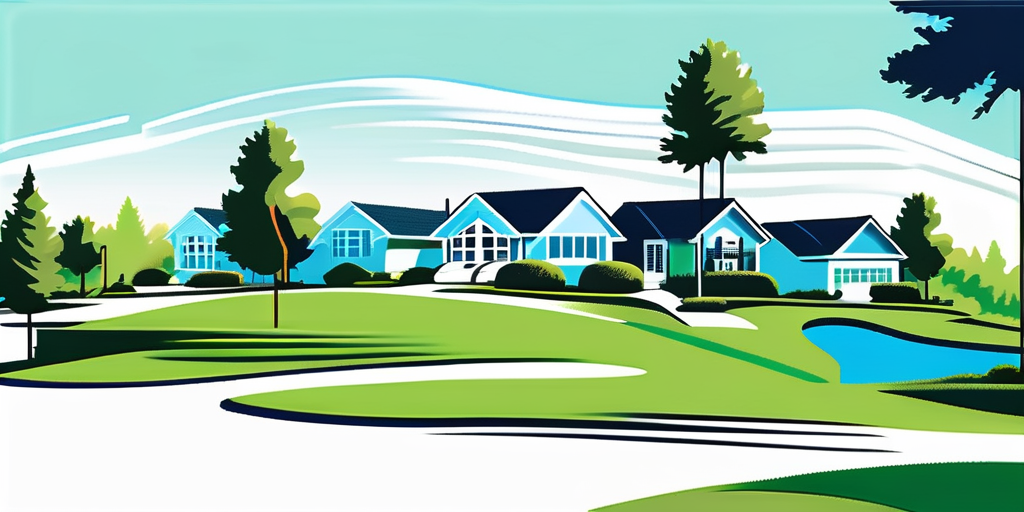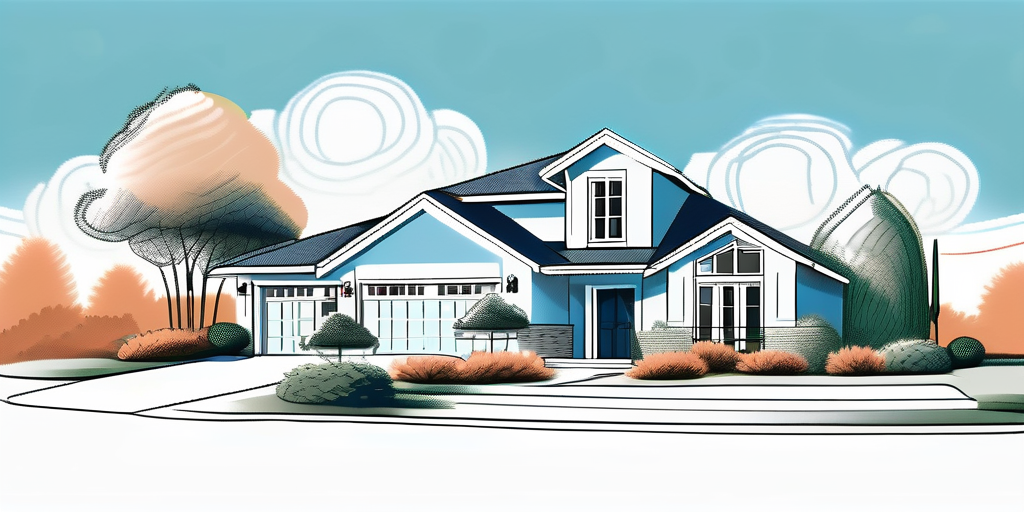
Are you an avid golfer dreaming of the perfect home? Golf community properties offer a unique lifestyle that combines property ownership with leisure opportunities on the green. In this article, we’ll explore everything you need to know about golf community properties, from their appeal and key features to how to find the best deals and make a house your home.
Golf community properties are residential areas built around or near golf courses. They provide residents not just a home, but also an invigorating lifestyle often centered around golf and recreation. These communities typically have outstanding amenities that cater to both avid golfers and those looking for leisure options.
Living in a golf community isn’t just about access to impeccable golf courses; it’s a lifestyle choice that fosters a sense of community and well-being. Imagine stepping out of your backyard, club in hand, ready to tee off. Many golf communities provide a social atmosphere that leads to lasting friendships and a shared passion for the game.
Furthermore, the landscaping in golf communities tends to be meticulously maintained, contributing to an overall aesthetic that many homeowners find desirable. With lush greens, scenic views, and often an abundance of outdoor activities, residents feel they are truly part of something special. Many communities also host regular events, such as golf tournaments, barbecues, and holiday celebrations, which not only enhance the sense of belonging but also offer opportunities for residents to engage and connect with one another.
When looking for properties in golf communities, you’ll find several key features that make them attractive. Homes often come with high-quality construction, modern amenities, and landscaping that enhances the natural beauty of the setting.
In addition to these features, golf community properties often include a variety of home styles, from luxurious single-family homes to low-maintenance villas, catering to diverse preferences and lifestyles. This variety allows residents to choose a living space that best suits their needs, whether they are retirees seeking tranquility or families looking for an active environment. Moreover, the proximity to golf courses often means that residents can enjoy not just golfing but also other recreational activities such as walking, jogging, and cycling along beautifully designed paths that wind through the community, enhancing the overall quality of life.
Another appealing aspect of golf community living is the potential for property value appreciation. Properties in these desirable locations tend to maintain their value well due to the ongoing demand for homes in golf-centric areas. This makes investing in a golf community not only a lifestyle choice but also a sound financial decision. As more people seek the benefits of a healthy, active lifestyle, the allure of golf communities continues to grow, making them a sought-after option for homebuyers looking for both leisure and luxury.
Now that you understand what makes golf community properties appealing, let’s discuss how to locate those best deals. It’s not just about stumbling upon a listing; it’s about being informed and prepared.

Start your search well in advance. Familiarize yourself with different golf communities and their property values. Utilize online listings, and don’t shy away from social media where real estate agents often post their latest offerings. Consider attending open houses or community events, as these provide opportunities to interact with current residents and get the insider scoop on pricing and amenities.
Networking can also extend beyond real estate agents. Join online forums or local clubs focused on golf or real estate investment; these platforms can be treasure troves of information. Engaging with fellow golf enthusiasts might lead you to properties that are not widely advertised. Additionally, consider subscribing to newsletters or alerts from real estate websites, which can keep you updated on new listings and price reductions in your desired communities.
Network with real estate agents who specialize in golf community properties. They can offer invaluable insights about pricing trends and may even know of listings before they hit the market. Having a dedicated agent who understands the nuances of golf community living can be a game changer, as they can help you navigate the unique aspects of these properties, such as HOA regulations and community amenities that may not be immediately apparent.
When you’ve found a property that ticks all your boxes, it’s time to negotiate! Don’t be afraid to make a fair offer lower than the asking price—it’s common practice in real estate. Doing a little research on recent sales in the community can strengthen your negotiating position.
Moreover, consider the timing of your offer. Real estate markets can fluctuate seasonally, and making an offer during a slower period might give you an edge. Sellers may be more willing to negotiate if they’ve had their property on the market for a while. If you can, try to learn about the seller’s motivations; understanding whether they are looking to sell quickly or are more flexible can inform your approach. If you're working with a realtor, lean on their expertise; they can provide guidance on how much to offer and how to navigate counteroffers. Remember, a good negotiating strategy can save you substantial money.
Additionally, be prepared to showcase your seriousness as a buyer. Having your financing in order or being pre-approved for a mortgage can make your offer more attractive. Sellers often prefer buyers who can demonstrate financial readiness, as it reduces the risk of complications later in the process. This can also give you leverage during negotiations, as sellers may be more inclined to accept your offer if they see you as a reliable buyer.
Once you’re ready to make an informed decision, it’s time to dive deeper into evaluating potential properties. It’s essential to scrutinize various aspects before committing.
Understanding property values in golf communities can be tricky. Consider factors like location within the community, proximity to the course, and the condition of the home. Properties directly on the course may hold higher value, but it can also depend on lot size and general market trends.
Consulting recent sales data will give you a clearer picture of whether a property is fairly priced. Working with a local real estate agent is a great way to obtain this information, as they can guide you on what features or locations demand a higher price. Additionally, it’s wise to consider the historical appreciation rates of properties in the community. Some golf communities have a strong track record of value retention, while others may fluctuate significantly based on market conditions, making it crucial to analyze long-term trends.
The location within the community can greatly impact your lifestyle experience. Some homeowners prefer being close to the clubhouse or community center, while others may enjoy quieter areas further away from public activity. Ensure the amenities align with your lifestyle—if swimming or fitness is important to you, proximity to these facilities should be a priority.
Moreover, consider the overall atmosphere of the golf community. Some may offer a vibrant social scene with frequent gatherings and activities, while others might cater to a more tranquil lifestyle. Understanding the demographic composition of the community can also provide insights into whether it aligns with your preferences, whether you seek a family-friendly environment or a quieter, retirement-oriented setting. Engaging with current residents can offer valuable perspectives on day-to-day living and the community's culture, helping you make a more informed choice.
Lastly, don’t overlook the importance of the golf course itself. The quality of the course, its design, and the reputation of the club can significantly influence property values. Research the course's maintenance standards, membership fees, and any exclusive benefits that come with living in the community. A well-regarded course not only enhances your golfing experience but can also attract potential buyers in the future, making your investment more secure.
Once you’ve identified a potential golf community property, the next step is financing. It's crucial to understand all of your options, especially if this is a significant investment for you.

Mortgage options for golf community properties are similar to any other residential properties, but there can be notable differences. Some lenders may have specific terms for properties in amenities-rich communities, which could affect your down payment or required credit scores. You might want to inquire about special financing programs offered for golf community homes. Additionally, it’s wise to shop around and compare rates from different lenders, as some may offer incentives for properties located in desirable golf communities. Understanding the nuances of interest rates and loan terms can significantly impact your long-term financial health.
Beyond the mortgage, remember to budget for maintenance fees, community fees, and other related costs that may arise from living in a golf community. These can quickly add up, so knowing your total financial commitment is essential before making a purchase. It’s also important to consider the potential for fluctuating costs, such as increases in property taxes or homeowners association fees, which can occur as the community develops or improves its amenities.
Setting a realistic budget can help ensure financial stability, allowing you to enjoy your new golf community home without a looming fiscal burden. Furthermore, it may be beneficial to consult with a financial advisor who understands the intricacies of golf community properties. They can help you evaluate your overall financial situation, including retirement plans and investment strategies, ensuring that your new home aligns with your long-term financial goals. By taking these steps, you can approach your purchase with confidence, knowing that you have a solid financial foundation to support your new lifestyle.
Finally, let’s consider how to make your golf community property genuinely feel like home. This step is where you infuse your personality into the space.

Once you’ve settled in, start by personalizing your aesthetic. You can redesign interiors or simply add personal touches through décor and landscaping. Maybe it’s displaying your favorite golf memorabilia or creating a serene garden by your patio where you can relax after a round of golf.
Your home should reflect who you are while also blending seamlessly with the community’s overall vibe. Don’t hesitate to experiment—this is your haven!
Consider incorporating elements that evoke the spirit of the game you love. For instance, using golf-themed artwork or custom furniture made from reclaimed wood can add a rustic charm while nodding to your passion. Additionally, think about creating a dedicated space for practicing your swing or putting; a small indoor putting green or a practice net in the backyard can be both functional and fun. These details not only enhance your living space but also serve as conversation starters with guests who share your enthusiasm for the sport.
Lastly, embrace the lifestyle that comes with your new home. Engage in community events, join local golf tournaments, and meet your neighbors. The more you immerse yourself in the lifestyle, the more you’ll begin to cherish your new golf community property.
Whether you're hitting the green, making new friends, or simply enjoying a sunny day in your backyard, living in a golf community provides a fantastic balance between relaxation and recreation. Take advantage of the amenities available to you, such as clubhouses, swimming pools, and fitness centers, which often host social gatherings and activities that foster camaraderie among residents. Participating in these events not only enriches your experience but also helps you build lasting relationships within your community.
By understanding what to look for and how to make the most of living in a golf community, you'll surely discover that dream home you’ve been yearning for. As you settle into this vibrant lifestyle, you may find that your golf community becomes not just a place to live, but a true extension of who you are and what you love.